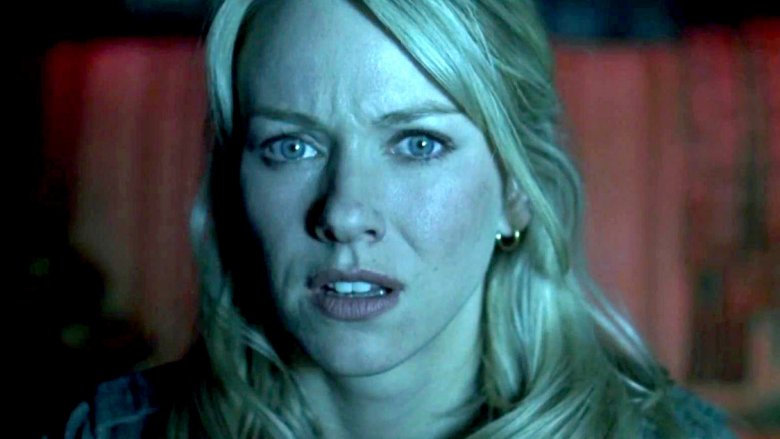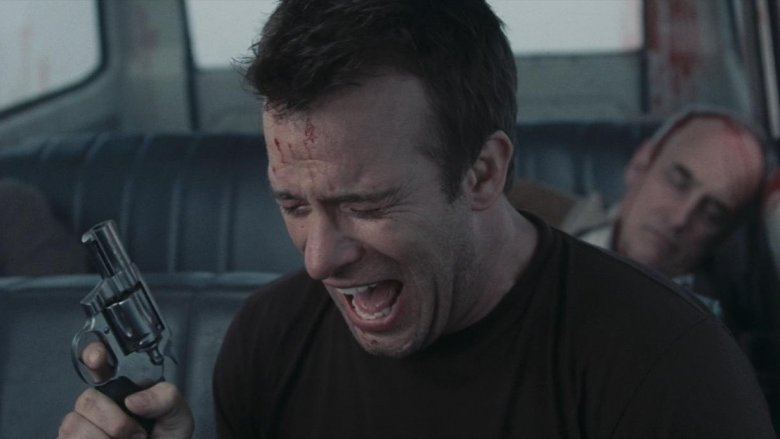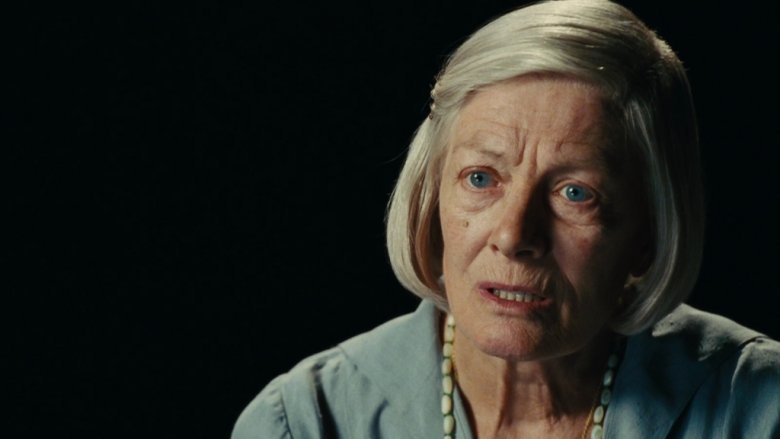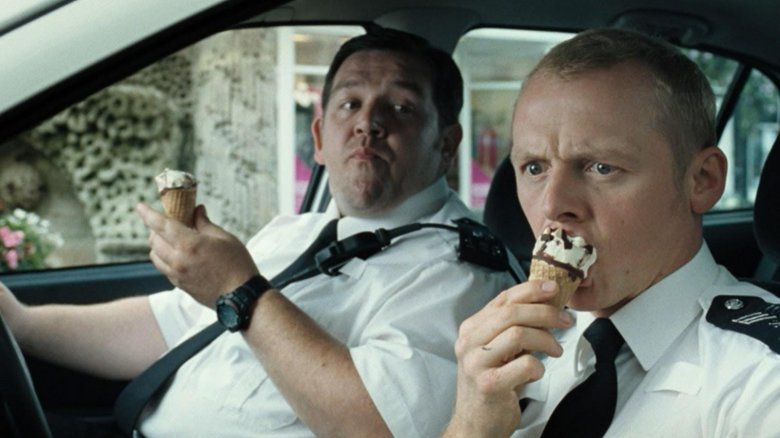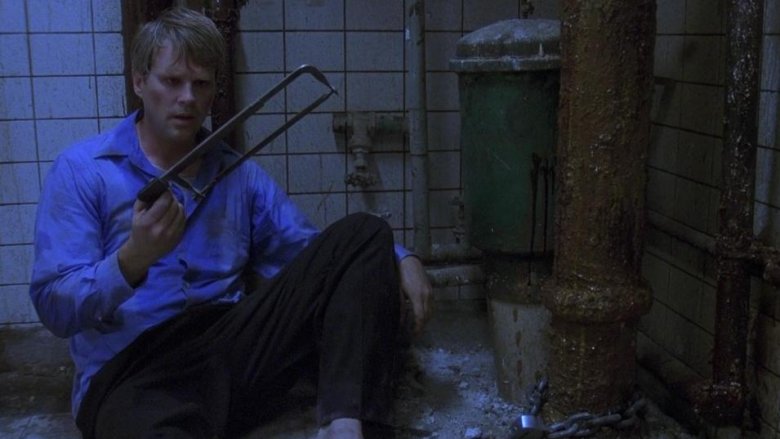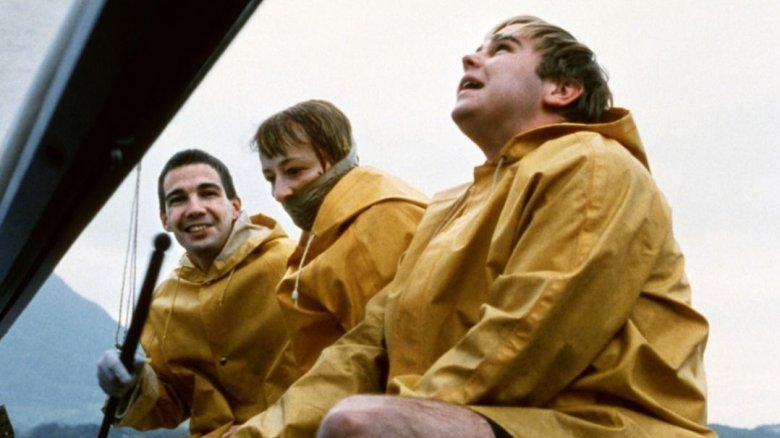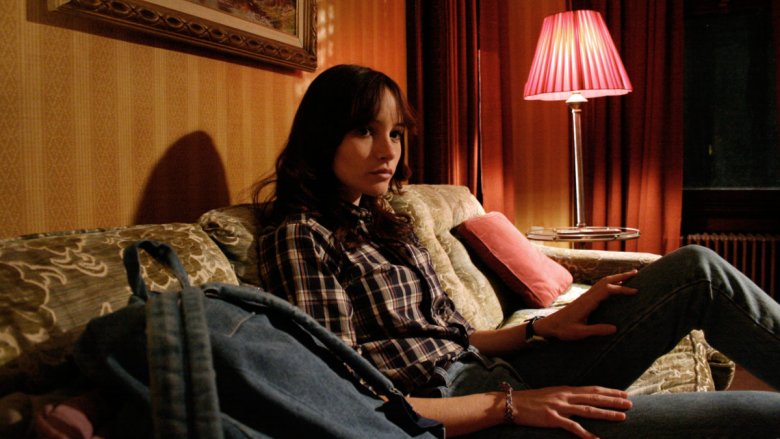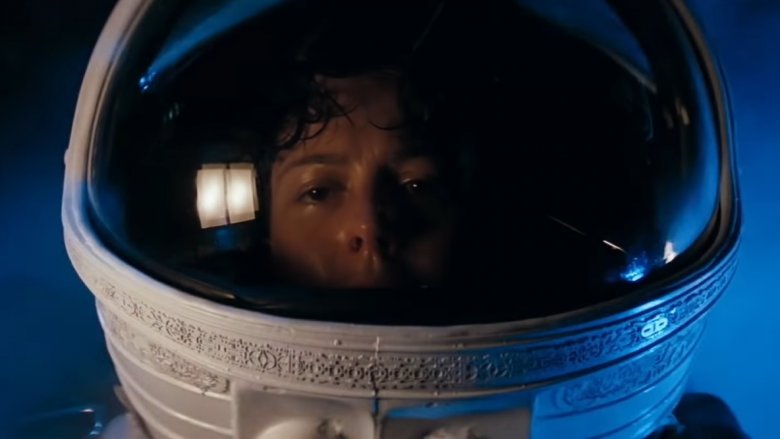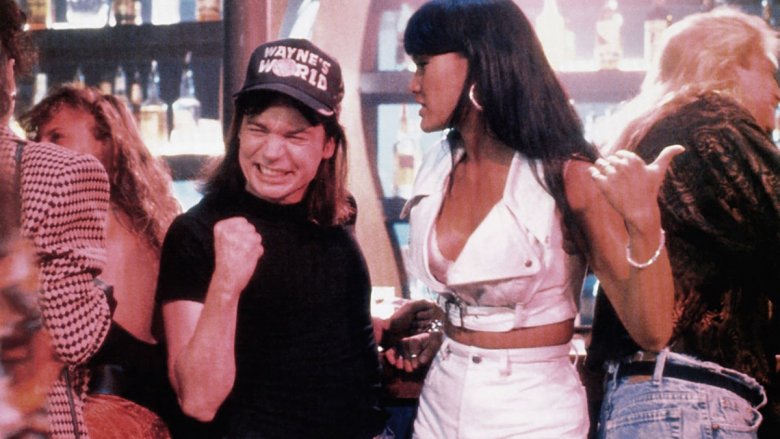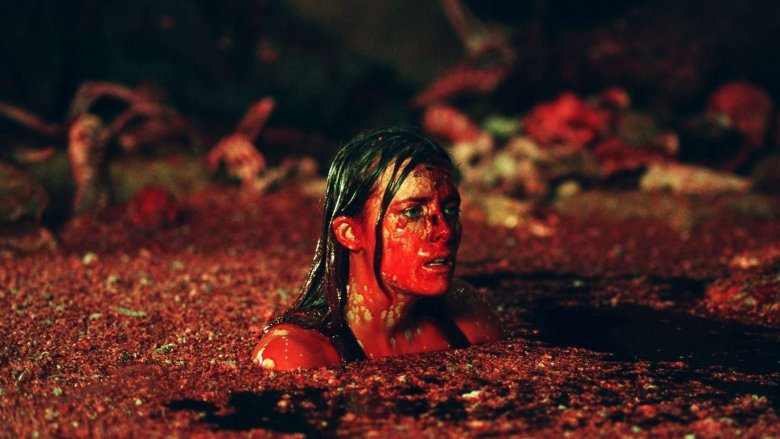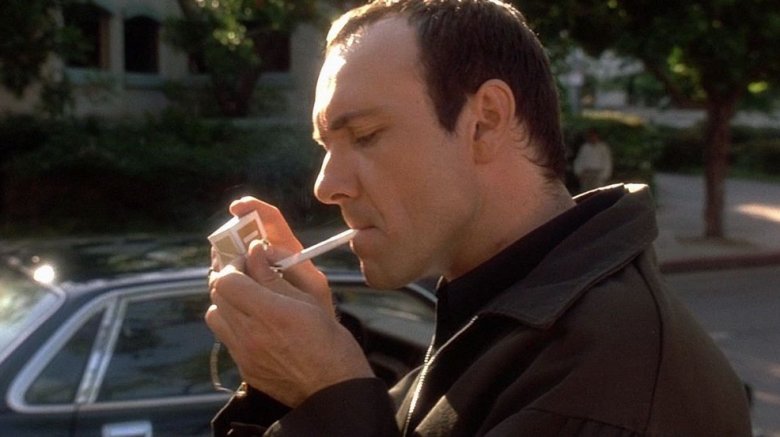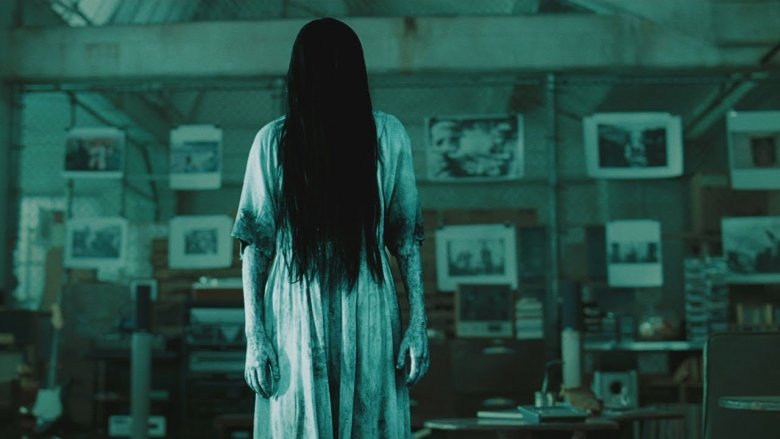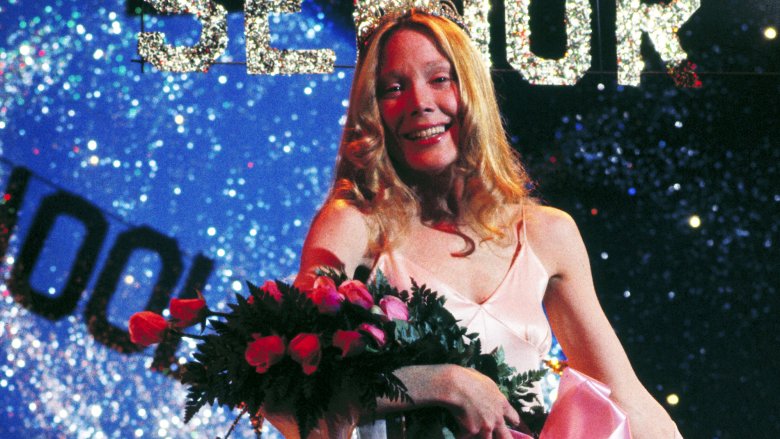The Most Epic Fake Movie Endings That No One Saw Coming
From the pre-credit jump scares of schlocky horror films to the post-credit teasers of the Marvel Cinematic Universe, fake movie endings are just about everywhere these days. However, the most epic fake movie endings are the ones that generally lull you into a false sense of security. They're the ones that make you think the story has come to a natural and satisfying conclusion, when the real – and usually, very shocking – finale has yet to be unveiled. They might feel like they're coming out of nowhere, but the films have been building towards this rug-pulling moment since the very first frame. The best fake endings aren't just trying to mess with our minds. They're using the accepted rules of storytelling to truly disrupt a narrative to great effect ... and then mess with our minds. From classic horror films to twisty crime tales, these are the most epic fake movie endings that no one saw coming. And yeah, this is a spoiler heavy zone.
The Mist fakes you out and then ruins your day
Based on the novel by Stephen King, The Mist has an ending that's so horrifically bleak that it's become one of the most notorious (and divisive) horror climaxes of all time. When the film first premiered, however, the poor filmgoers about to watch it had no idea of the shocking, day-ruiner of an ending that was awaiting them.
That's especially true for those in the audience who were familiar with King's original novella, which ends in a typically vague fashion for the author. The five survivors of the story drive away with the hope of being rescued, but there's still the possibility they're doomed to become monster chum.
Frank Darabont's cinematic adaptation, however, opts for an even darker possibility. The car runs out of gas, and all five survivors agree that suicide is better than becoming a snack. David (Thomas Jane) reluctantly agrees, and because there are only four bullets left, he shoots his gang of survivors — including his young son — and is left despairing, traumatized, and ready to be devoured by the creatures in the mist.
It's an incredibly somber ending ... and then we get the actual finale. David watches the military roll into town, slaughter every creature in sight, and rescue all the people they find on the way. If he could've just waited five more minutes, his friends and son would still be alive. It's sick, completely unexpected, and an utterly brilliant fake-out.
Atonement's ending will break your heart
Joe Wright's vastly underrated period drama, Atonement, doesn't receive nearly enough kudos for being one of the most heart-wrenching portraits of class division and wartime trauma ever committed to film. And though the epic fake ending perfectly follows its source material, Ian McEwan's novel, it remains heartbreaking to those unfamiliar with the original story.
For most of the movie, we follow the miserable aftermath of upper-class Cecilia (Keira Knightly) and her working-class lover, Robbie (James McAvoy), having their lives and romance interrupted when Cecilia's little sister, Briony (Saoirse Ronan), falsely accuses Robbie of a crime he didn't commit.
The two are separated, and Robbie is sent off to war, but thankfully there's a happy ending. He survives, is sent home, and finally reunites with Cecilia. Briony has the chance to apologize to them both, and she agrees to confess about her lie and have the legal record changed against Robbie. So far, everything seems pretty cheery.
Except that the ending is a big stinking lie. We see that the satisfying climax we've just watched was fabricated by an elderly Briony (Vanessa Redgrave), now a famous writer, hoping to rewrite history to atone for her lies. In reality, Robbie died in Dunkirk, and Cecilia died two months later in a tube station bombing. Yep, and now we're all crying. Great.
Hot Fuzz has multiple, explosive fake endings
The second film of Edgar Wright's Cornetto Trilogy, Hot Fuzz pays loving tribute to Hollywood action movie tropes by relocating the buddy cop formula to the British countryside. So we probably should've all seen this fake ending coming, where Wright saves up one final shootout and explosion to fully seal the story.
After uncovering the truth about the Neighborhood Watch Association (NWA) — the town elders of Sandford are killing anyone who might ruin their chances of winning Village of the Year — Sgt. Nicholas Angel (Pegg) brings operation leader Inspector Frank Butterman (Jim Broadbent) in for arrest, with a little help from a violent swan. Everything seems to be tidily wrapped up, and we're back at the station for a cup of tea.
Except, as the coppers are all filing their paperwork, the last remaining NWA member (who we've forgotten all about) bursts into the station and shoots poor Danny (Nick Frost). However, in the ensuing struggle, the silly sausage steps on a sea mine (introduced earlier on in the movie), accidentally activates it, and blows himself and the police station up.
For a moment there, we think that Danny died, but that's just Edgar Wright having a bit of fun. The absolute final ending shows Danny surviving his gunshot wound, and now, he's leading the Sandford cops with the help of his BFF, Angel. Aw.
Saw has an ending that no one saw coming
The whole fake ending aspect of the seemingly endless Saw franchise has become a bit of a cliché within the film series. But when the first one was released in 2004, its fake ending genuinely caught people off guard and provided a ghoulish climax for horror fans looking for the sort of cheap thrills the film certainly serves up.
Initially, we're given an ending in which hospital orderly Zep (Michael Emerson) is revealed to have been puzzle-loving serial killer Jigsaw all along. It doesn't make a lot of sense, but the reveal does prompt Lawrence (Cary Elwes) — a doctor at the same hospital — to saw off his own leg so he can crawl out of his little prison to find help. Meanwhile, Adam (co-writer Leigh Whannell) bludgeons Zep to death with a toilet tank lid, and that seems to be the end of that. Good job, everyone!
Except, it isn't. The movie's actual ending shows Adam discovering that Zep was another of Jigsaw's victims. Not only that, but the corpse that's been lying in the middle of the room the entire movie stands up and reveals himself to be the real killer before abandoning a stunned Adam in the room alone to die. Talk about a downbeat ending.
The fake ending of Funny Games isn't so funny
Funny Games depicts a bourgeois family whose vacation comes to a screeching halt when two polite psychopaths, Peter (Frank Giering) and Paul (Arno Frisch), enter their lives with intent to slowly torture and kill them all ... which they do, very successfully and very shockingly. And by the end of the film, only Anna (Susanne Lothar), the family matriarch, remains.
Director Michael Haneke smartly utilizes his running time to bring the movie to what American audiences would see as being a natural and satisfying conclusion. Anna grabs a shotgun and kills Peter with it, making it seem like she finally has the upper hand and might finally survive the ordeal.
Except, this is a movie where the villains have complete control over the narrative, even breaking the fourth wall repeatedly so they can wink at the audience like an accomplice to their crimes. With that in mind, Funny Games' actual ending sees Paul using a television remote to rewind the scene itself, snatch the shotgun before Anna can get it, and go on to enjoy the ending he wants — the one where he and Peter successfully kill Ann.
Haneke's 1997 psychological thriller (and his 2007 US remake) is revered for providing an unsettling meta-commentary about how violence is depicted and manipulated in American media, which only makes these specific scenes all the more harrowing to engage with.
The House of the Devil has two horrific endings for the price of one
Ti West's throwback horror film, The House of the Devil, is set against the Satanic Panic of the 1980s, and in this film, the characters have plenty of reason to panic. The plot follows Samantha (Jocelin Donahue), a young college student, who accepts a job as a babysitter only to discover that she's actually been hired to care for a mysterious "able-bodied" older woman. As she investigates the creepy house, Samantha finds herself drugged, bound and gagged, and placed in the middle of a bizarre Satanic ritual, courtesy of the creepy family who hired her.
After what appears to be some manner of conception ritual, Samantha manages to escape and find herself a gun, like an absolute boss boss. Here, West delivers a shocking ending that sees Samantha facing off against the family patriarch, and upon realizing she may now be a vessel for something she'd rather not be, she chooses to shoot herself in the head rather than kill the guy who pulled her into the ritual.
In and of itself, that's a gut-punch of an ending, one that leaves a distinctly sour note by depicting a young woman sacrificing herself for what she thinks is the greater good. However, not content with simply delivering just one solid upper-cut to your abdominal area, West unveils the actual, final ending: Samantha survived the gun shot wound ... and so did her unborn, most-definitely-satanic child. It's absolutely chilling.
Alien makes you drop your guard before it attacks
In 1979's Alien, Ellen Ripley is having a really bad at work. She just saw her workmates get turned into a Xenomorph Happy Meal, and she even witnessed one co-worker give birth to a phallic monster via a ruptured chest cavity. So yeah, it's a relief when the straight-talking, badass Ripley (Sigourney Weavers) finally makes it out of the whole thing in one piece.
Ridley Scott's tenacious heroine escapes the Nostromo, climbs into a shuttle, and prepares for stasis. Her ordeal appears to be over, and as she finally lets her guard down and starts to relax, so too does the audience. Unbunch those shoulders, folks. The scares are over. It's a happy ending!
It's a delightfully cruel trick that Scott pulls on his audience, as he slowly reveals in the wind-down of the narrative that there's actually an alien stowaway on board Ripley's shuttle. Now that Ripley is relaxed and completely alone, she's all the more vulnerable against the creature.
Thankfully, Ripley also happens to be a one-woman, alien-killing machine, and she manages to blast the toothy lifeform safely out of the craft so she can kick back with her cat and live to see another day. It'll take more than one measly alien and one fake ending to defeat Ellen Ripley.
The fake endings in Wayne's World just keep on coming
Okay, so all the "Bohemian Rhapsody" headbanging aside, Wayne's World might not exactly be the first film you think of when the topic of epic movie anything pops up. However, the 1992 comedy film remains the highest grossing movie based on a Saturday Night Live skit, and it should also be celebrated for helping to usher in an era of wonderfully self-aware cinema.
Following a narrative that takes great pleasure in poking fun at how much of American media is designed to sell things to people, Wayne's World provides a satisfying set of false endings that likewise lampoons flimsy movie finale. First, there's a sad ending where everything that can go wrong does go wrong, with Wayne (Mike Myers) smiling through a set of flames as his basement goes up in smoke. Next up is the Scooby Doo ending, where Benjamin (Rob Lowe) is revealed to be Old Man Withers from the haunted amusement park.
That seems like it might bring the movie to a close, but then Wayne and Garth (Dana Carvey) opt to finish with the "Mega Happy Ending," where everything goes stupendous for absolutely everyone, and it's air guitar solos and high fives all around.
The Descent dives deep into a super dark ending
In a baffling example of movie studios thinking that US audiences are simply too fragile to deal with utterly bleak finales, The Descent's fake ending can only be found in the original cut of the movie, which was screened in the UK. It's a real shame because the OG ending of Neil Marshall's horror classic features one of the most brutal fake-outs in cinema history.
After watching her entire friend group get picked off one-by-one by a set of super ugly subterranean creatures, Sarah (Shauna Macdonald) finally escapes the cave, makes her way outside, and sees a hallucination of the recently deceased Juno (Natalie Mendoza) as the screen fades to black. US audiences had the film finish here to save their apparently far-too-delicate souls.
For UK viewers, however, the movie resumes with the harrowing truth: Sarah is still in the cave. She was simply hallucinating the entire escape. Worse still, the crawlers can be heard closing in on her as the screen cuts to black. It's dark, it's brutal, and it's the only way to end the film.
The Usual Suspects takes a very unusual turn
The fake ending of The Usual Suspects is probably one of the most iconic in cinema history, one that's often imitated but never matched. Back in a far more innocent time when both director Bryan Singer and star Kevin Spacey were well respected people in their industry with no nasty baggage following them, the film dropped such a bombshell of a fake ending that it was all anyone could talk about for years.
After a suspenseful, twisting narrative, Detective Kujan (Chazz Palminteri) is sure that Dean Keaton (Gabriel Byrne) is the mysterious and murderous crime lord Keyser Soze. Kujan even gets a testimony from Verbal Kint (Spacey), a surviving witness with cerebral palsy who appears to verify his theory, even if he refuses to testify in court. There's a certain sense of finality to how Singer presents these scenes, which genuinely makes the viewer think the story is all wrapped up. And that's exactly what makes the resulting denouement all the more surprising and satisfying.
We watch as Kujan slowly makes the shocking realization that Verbal fabricated his entire deposition. Plus, there's the facial composite that's finally faxed through, identifying Verbal as Soze. And that's when we see the man we thought was Verbal slowly losing his signature limp and flexing his supposedly disabled hand, as the real Keyser Soze exits stage left, in plain sight. Not a single person saw that ending coming at the time of release, and we're still talking about that crazy plot twist to this day.
The Ring's fake ending makes televisions terrifying
The year 2002 was the probably the last conceivable moment in time when a hit horror movie could be released around the premise of a cursed VHS tape and not be laughed out of theaters. It's difficult to imagine the Snapchat generation quaking in their boots over technology they don't even understand, never mind possess. But in 2002, it was still spooky as all get out, and The Ring's fake ending remains one of the scariest.
The film draws to a nice, wholesome conclusion with Rachel (Naomi Watts) and her son arranging a proper burial for VHS well-dwelling corpse Samara. All is well as the burial appears to lift the curse from both of them. Only, it turns out that Samara's a bit of a tease. Though Rachel has been spared, the curse still exists for everyone else who's watched or will watch the tape — including Rachel's dopey ex-boyfriend (Martin Henderson) who watched it seven days ago and is now about to die a horrible death.
Rachel and her son race to save the poor schmuck, but by the time they get to him, Samara's already crawled out of his television and pelted him with so much death that his face is nothing but a deep fried mess. The real conclusion doesn't revolve around giving Samara a proper burial, but in Rachel realizing that they need to copy the tape and pass it along to another unsuspecting fool in order for her to save her son from the same fate. And even though we're way past the era of VHS tapes, the ending of The Ring still makes us nervous to turn on the TV.
Carrie's ending is equal parts sad and scary
In 1976, Brian De Palma's seminal adaptation of Carrie — Stephen King's first full-length published novel — stunned and horrified audiences in equal measure. At this point, of course, everyone knows the infamous trajectory of the story. It's your classic "girl-with-telekinetic-powers-meets-boy, girl-becomes-prom-queen, girl-massacres-her-entire-class-before-killing-herself-and-her-abusive-mother" high school romp.
It's intense, to say the least. So when we see the lone survivor of the massacre, Carrie's ally Sue Snell (Amy Irving), visiting Carrie's grave to pay some final respects to her bullied classmate, it presents a much needed moment of calm. Despite everything, Sue still feels remorse for how poorly Carrie (Sissy Spacek) was treated when she was alive, and it looks like we're closing out with a somber yet satisfying conclusion.
Except, it's not the finale that De Palma goes with. Instead, he chooses to pull out one final scare by showing Carrie's hand launching out of her grave and attacking Sue in what's swiftly revealed to be a dream sequence, teasing the idea of Carrie's power existing beyond the grave. In 2019, the moment likely feels trite to modern audiences overly familiar with such horror trickery. But in 1976, the fake ending completely messed people up. It's one of the greatest jump scares of all time, and Sissy Spacek even confessed that she used to "go to theaters just for the last five minutes of the film to watch everyone jump out of their chairs."
